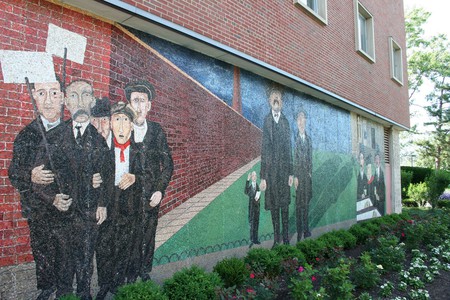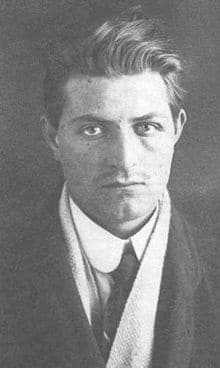Argentina has been home to many colourful characters over the years, but some of the most infamous were anarchists who immigrated from Italy at the beginning of the 20th century. Let’s meet Severino Di Giovanni, Argentina’s most famous Italian anarchist.
Severino Di Giovanni was born in Italy in 1901, where he became quickly radicalized against authority, having grown up in poor post-WWI rural Italy. He married his cousin Teresa and the pair decided to head for Argentina in the 1920s with the last wave of Italian immigrants to the South American country. They immediately fell in with anarchist and anti-fascist groups that pervaded pre-WWII Buenos Aires.

Given Argentina’s strong connections to Italy, there was no shortage of causes to which Di Giovanni could commit himself as an anti-fascist, and his first act as a fully fledged anarchist was against Argentina president Marcelo Torcuato de Alvear and an Italian fascist minister who was in Buenos Aires to celebrate the 25th anniversary of Victor Emmanuel III’s ascension to the Italian throne. By all accounts, this was a fairly bland protest in comparison to what Di Giovanni would go on to do, and involved the scattering of leaflets and the shouting of protest slogans against the Italian aristocracy. It was soon shut down by some Blackshirts in attendance, but it put Di Giovanni on the radar of the Argentine ruling and political classes.

A mural commemorating Sacco and Vanzetti | © rachaelvoorhees / Flickr
Following this, Di Giovanni was quick to fly the flag for Nicola Sacco and Bartolomeo Vanzetti, Italy’s most famous anarchists who were on trial in the US. Di Giovanni, having taught himself the art of typography earlier on in life, produced his own anarchist publication called Culmine, which was an outlet for his activism and helped him to spread anarchism among workers in Argentina. The death sentencing of Sacco and Vanzetti prompted Di Giovanni to conduct the first of many bombings that he would carry out against perpetrators of fascism all over the world.
He bombed the US embassy in Buenos Aires in May 1926 and was captured by the authorities. They knew him from the Teatro Colon protest and tortured him for five days so that he’d speak, but he held his resolve and would not admit his guilt. A year later, Di Giovanni blew up a statue of George Washington in Buenos Aires to protest the execution of the two anarchists in Massachusetts. This was a busy day for Di Giovanni, as a few hours later, he detonated a bomb in the Ford Motor Company in the Argentine capital. A month later, he set off a bomb in the house of the police officer in charge of investigating the explosions, who had left the house momentarily and escaped unscathed. But Di Giovanni was on a roll and would not be deterred, and so upon receiving a note of thanks from Sacco’s widow which also tipped him off to another fascist conspiracy involving a cigarette company that looked to profit from the deaths of Sacco and Vanzetti, he continued his bombing spree with the explosion of a tobacco shop in Buenos Aires.
Several other bombings followed in late 1927 and early 1928. CitiBank, the Bank of Boston, the Italian consulate and a pharmacy were all targeted by Di Giovanni, with varying success on his part. However, this bombing campaign and Di Giovanni’s tactics did not sit well with other prominent anti-fascist leaders, who were critical of his methods. But Di Giovanni, was not deterred, and continued his campaign with the planned bombing of a train which was reportedly carrying Herbert Hoover, the American president elect. The bomber was intercepted, marking the end of Di Giovanni’s bombing escapades. Instead, he conducted one of Argentina’s most infamous robberies, before being arrested in 1931. He was executed in 1931 at the age of 29, and his final words before receiving eight bullets that resulted in his death were fitting: he shouted, “Evviva l’Anarchia!” (Long live anarchy!)”.
Further reading: here






